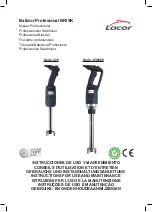
3
Before you start
00
It’s critical that you have at least 1 bar of usable signal outside or on the roof of the building
you’re installing the GO G41 in. If you don’t have 1 bar, or if you’re not sure, give us a call.
What do we mean by usable?
Well, you need to be able to place a call and use data reliably. A good way to check is to turn
your phone's Wi-Fi off, go outside, visit speedtest.net, and run a test. If your test is able to
complete, you've got usable signal!
Cell boosters bring signal inside from outdoors. If you don’t have 1 bar of usable signal
outside your building, we’re sorry, but the GO G41 likely won't work at your location. Visit
waveform.com/returns
to set up a return. We’re happy to take your Cel-Fi GO G41 back and
try to help you find a booster that might work.
Compatibility
A quick note on compatibility. The Cel-Fi GO G41 is compatible with:
AT&T 3G, 4G LTE and 5G DSS signal on Bands 2, 4, 5, and 12
Verizon 3G, 4G LTE and 5G DSS signal on Bands 2, 4, 5, and 13
T-Mobile 3G and 4G LTE signal on Bands 2, 4, 5, and 12
Worried about 5G? The Cel-Fi GO G41 is the only consumer grade signal booster capable
of relaying 5G-DSS at 100 dB of gain. Additional 5G NR support will be added in 2024 via a
firmware update.
Dynamic Spectrum Sharing (DSS) is used by some carriers to transmit 4G LTE and 5G in a
single “hybrid” channel. 5G DSS Support on the GO G41 is enabled by default on the same
bands listed above.
Unfortunately, the GO G41 cannot boost T-Mobile 5G. T-Mobile's 5G bands are deployed on
bands n71 and n41, which the FCC has not yet approved for boosting in the US.
What do the LAN and USB-C ports do?
The LAN and USB-C ports on the side of the GO G41 are diagnostic ports that can only be
accessed by Cel-Fi Certified System Integrators. The small light is associated with these
ports. No need to worry! Access to these ports is not necessary to setup your system.





































